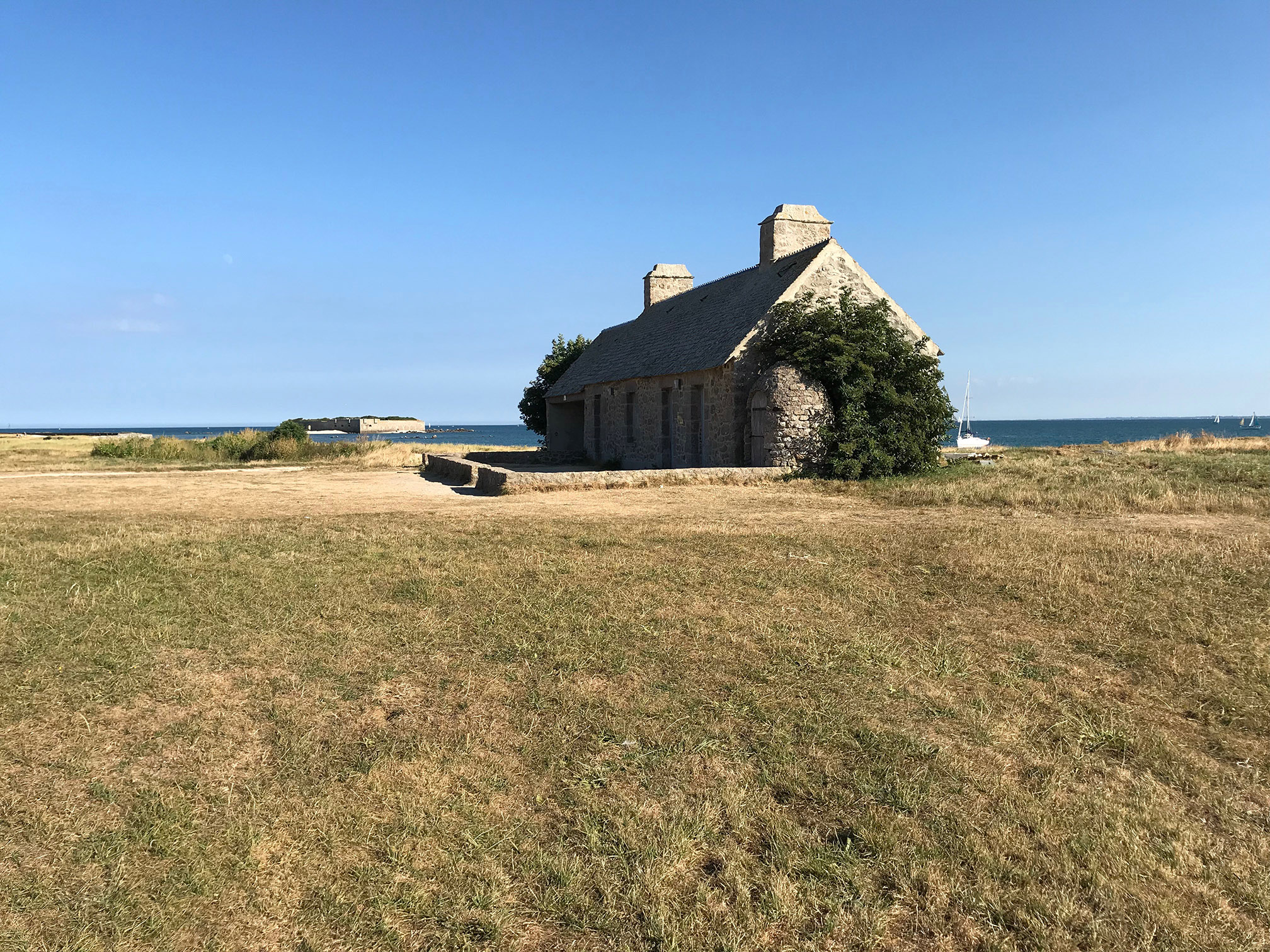
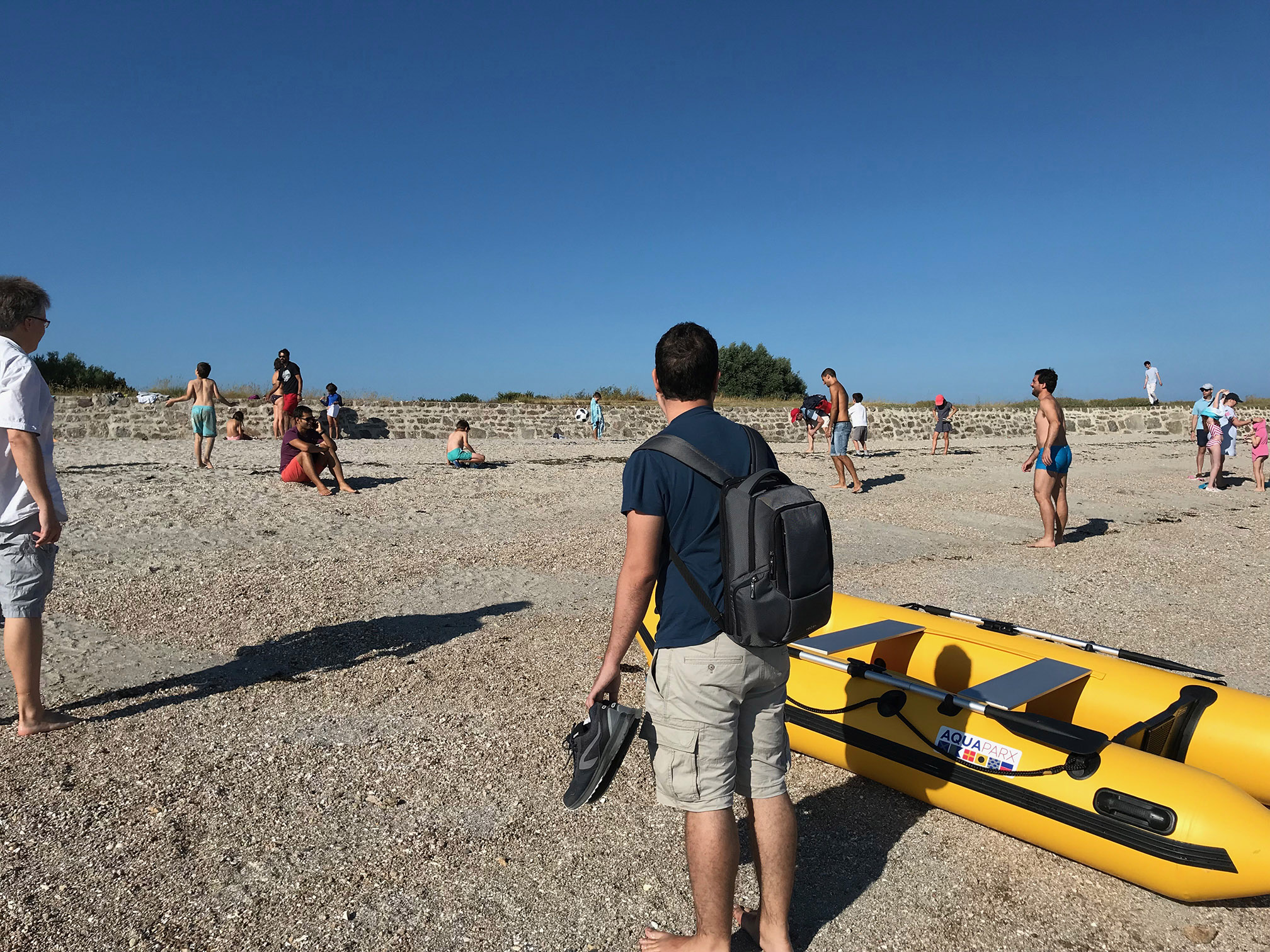
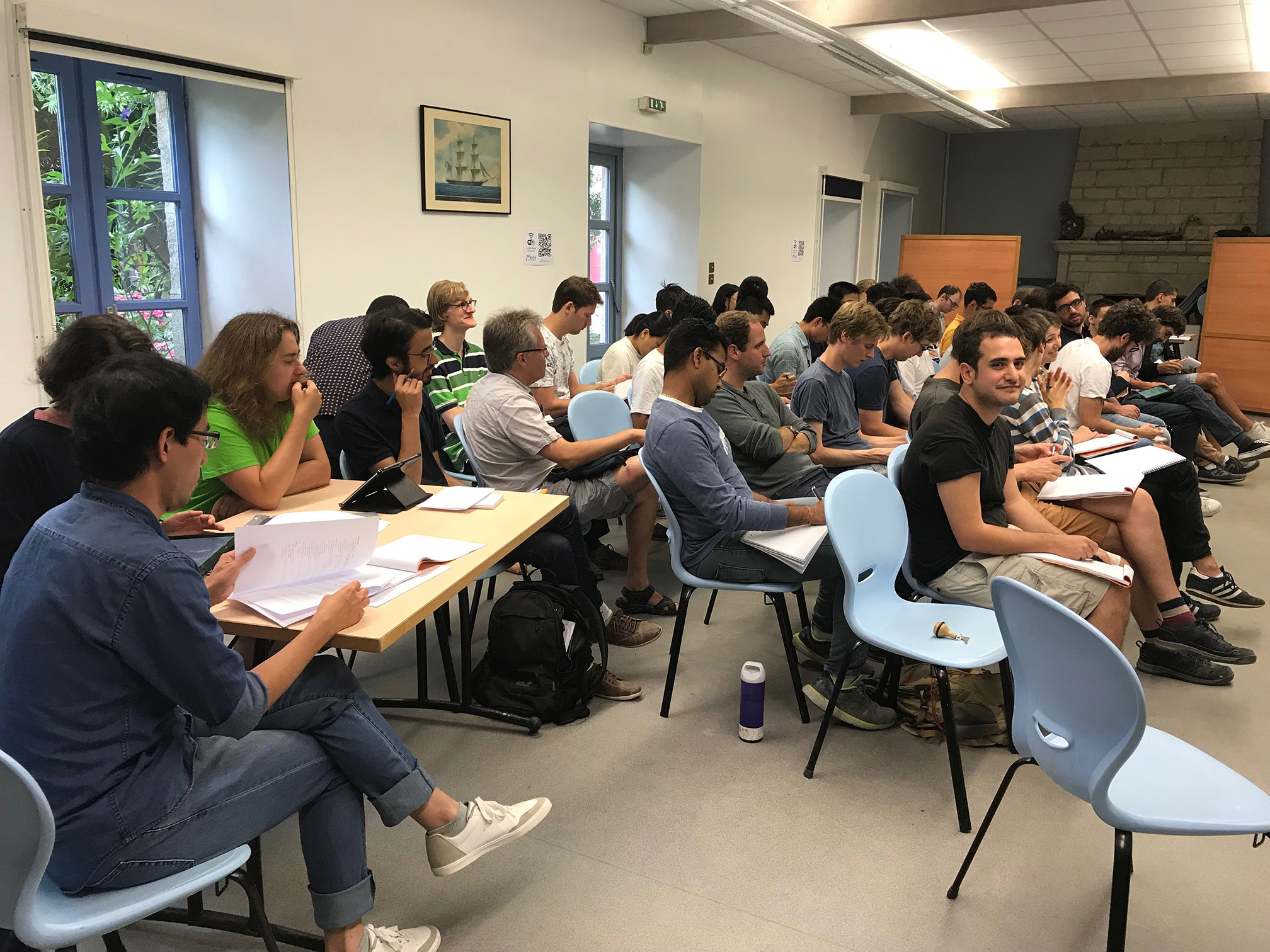
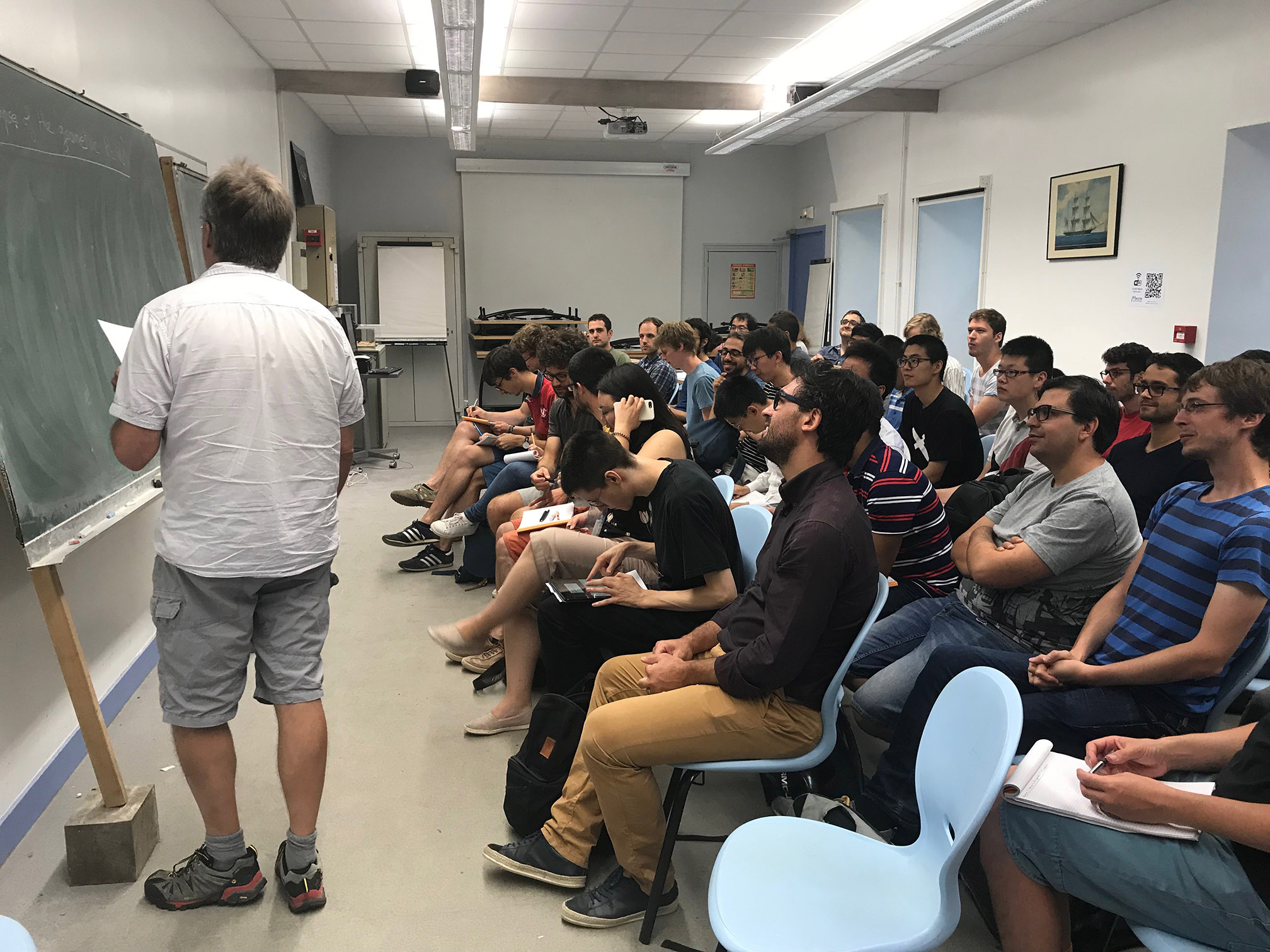
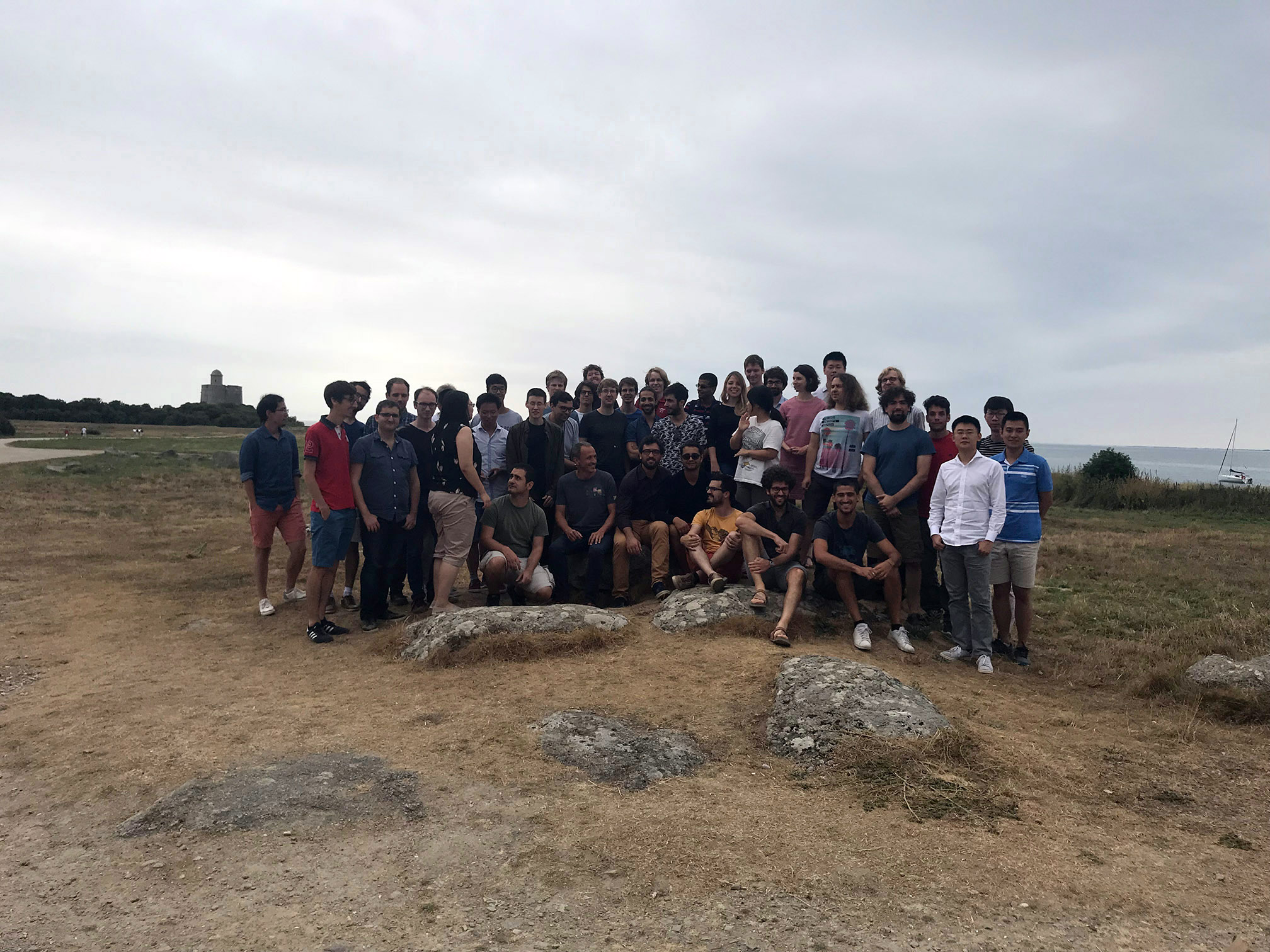
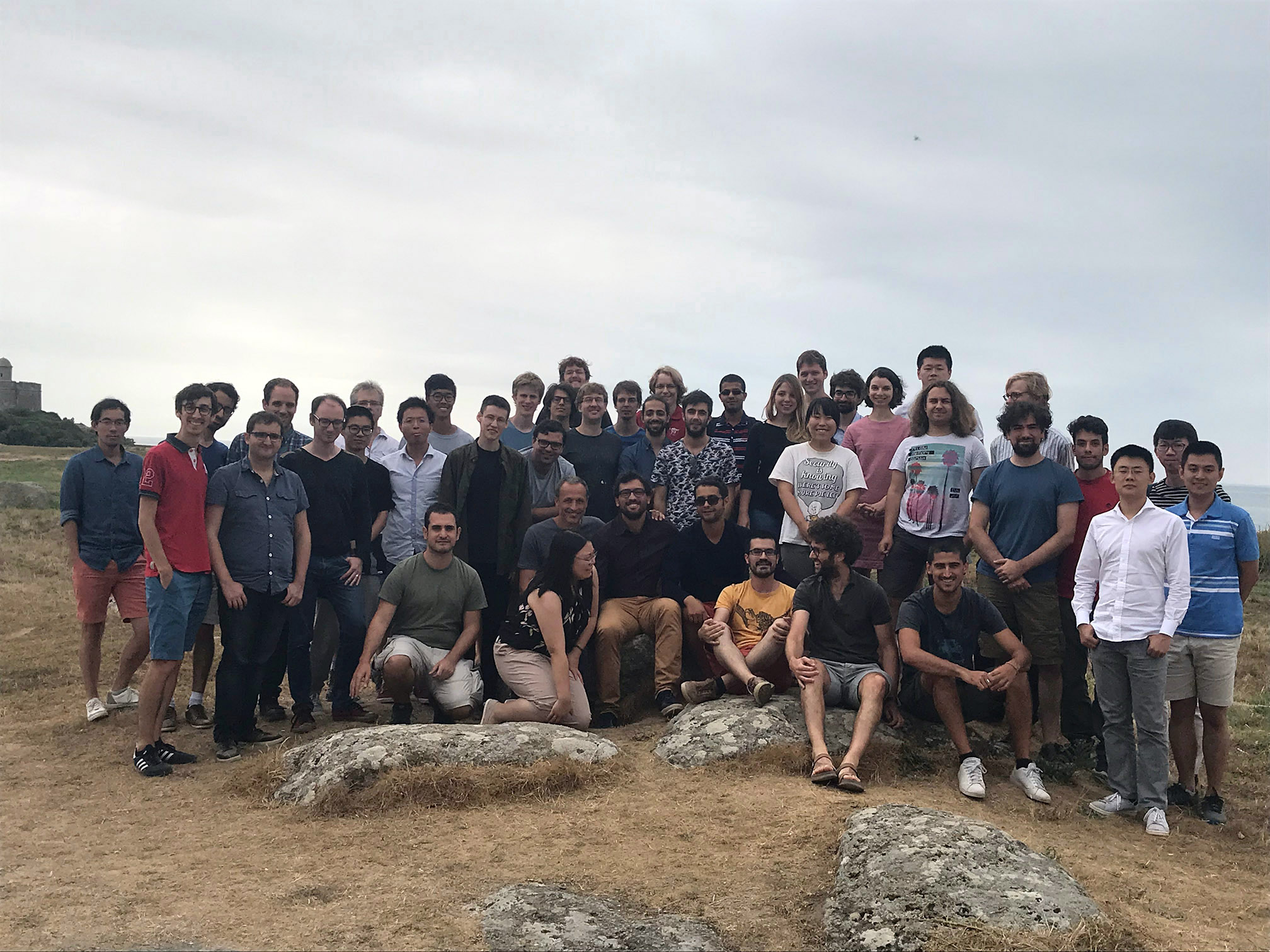
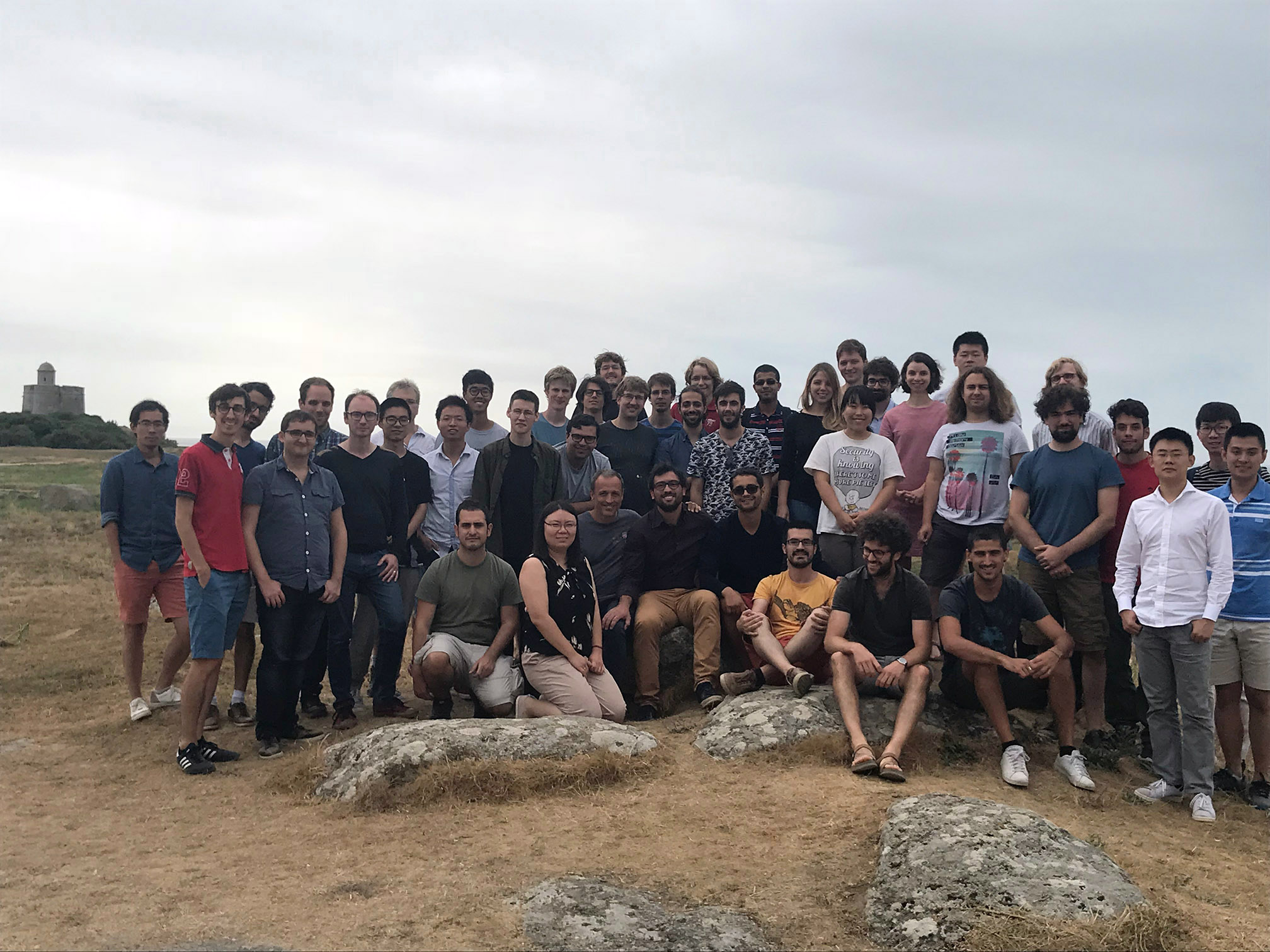
1. The Riemann-Hilbert correspondence for local systems. Examples in dimension one.
Marco Maculan
In this talk one should give the basic definitions about local system, state the equivalence with representations of the fundamental group and with vector bundles with integrable connections. Examples with differential equations. Even though not necessary for the school, one can talk about the Riemann-Hilbert correspondence in the non compact case, regular singularities and so on.
References [7], [14].
2. Standard Hodge theory of $\mathrm{H}^1$ as non abelian Hodge theory.
Yichen Qin
The apparatus of non-abelian Hodge theory can be made very exlicit in the abelian case (i.e. for the group $\mathrm{GL}_1$). This was carefully made in [10]. It is instructive to put the stress on the non complex nature of the map from the Dolbeault model to the Betti one, and the highly transcendental nature of the holomorphic map form de Rham to Betti, given by integrating differential equations. One can emphasize differences between the three models, e.g. the de Rham model is Stein but has no regular functions, whereas the Betti model is affine. If time allows some discussion of the results in [31] would be interesting.
Reference: [10], [31]
3. The character variety: construction via Geometric Invariant Theory. Smoothness of the twisted character variety for the fundamental group of a curve.
Eloise Hamilton
Give some basic facts of Geometric invariant theory and the construction of quotients of affine varieties by actions of reductive groups. Then specialize to the case of the fundamental group of a compact Riemann surface and do the computation in [11] to show that the twisted one is nonsingular while the untwisted one is singular. It would be interesting to discuss the canonical symplectic form on this moduli space. Reference [30] contains the discussion of some fine points about character varieties.
References [22], [20], [11], [30]
4. Mixed Hodge Structures, the $W$-filtration and $E$-polynomials.
Alex Torzewski
Give the basic notions of Mixed Hodge theory: definition of a mixed Hodge structure, properties of maps between MHS, especially strictness. Sketch the construction of a MHS on a nonsingular noncomplete algebraic variety by means of a compactification and forms with log poles. Use strictness of maps between MHS to set the formalism of $E$-polynomials. Give examples of computations of $E$-polynomials.
References [36], [28]
5. Computing Betti numbers of character varieties by counting points.
Javier Fresán
Building on the previous talk, explain how Hausel and Rodriguez Villegas manage to compute the $E$-polynomial of character varieties by counting points over finite fields, and upgrade to the computation of the $W$-filtration. Emphasize the strange nature of the “Curious Hard Lefschetz theorem”.
References [11]
6. Construction of Higgs and de Rham moduli the $\mathbb{G}_m$ action on the Higgs moduli space.
Mauro Porta
Sketch the construction of the three moduli spaces of Hodge theory. Discuss the symplectic form and $\mathbb{G}_m$ action on $\mathcal{M}_{\textrm{Dol}}$. It is enough to specialize to the case of a curve.
References [18], [25], [33], [34], [32]
7. The maps of non abelian Hodge theory.
Xiaohua Ai
Explain the real analytic homeomorphism of $\mathcal{M}_{\textrm{Dol}}$ and $\mathcal{M}_{\textrm{dR}}$ and also the description of the family $\mathcal{M}_{\textrm{Hodge}}$ in terms of $\lambda$-connections, then the biholomorphism of $\mathcal{M}_{\textrm{dR}}$ with $\mathcal{M}_{\textrm{Betti}}$ given by the Riemann-Hilbert correspondence.
References [18], [33], [34], [32]
8. Compactified jacobians. Compactified jacobians and affine Springer fibres.
Marco d’Addezio
Define the compactified Jacobian of a curve with planar singularities and give a few properties and examples (at least nodal curves and cusps). Stress the need for a stability condition for reducible curves. If possible give its relation with the affine Springer fibre for the group $\mathrm{GL}_n$.
References [17], [23]
9. The Hitchin map: properness.
Olivier Benoist
Establish the basic properties of the Hitchin map, such as $\mathbb{G}_m$-equivariance, properness, flatness. Introduce spectral curves and give some basic properties e.g. compute their arithmetic genus, notice they are planar, show that the total space of the spectral curve family is nonsingular. Coordinate with the next speaker to introduce the BNR.
References [13], [12], [3], [19], [9], [25]
10. The fibers of the Hitchin map. The spectral curve construction and the action of relative Picard. BNR correspondence.
Camilla Felisetti
Explain the BNR correspondence, first on nonsingular curves (maybe this can be done in the previous talk) then on general (reduced) spectral curves. This leads immediately to an identification of the fibres of the Hitchin map with the compactified Jacobians of the spectral curves, at least in the case where these are integral. Examine the stability condition on reducible curves, as in the Appendix of [24]. It would be great to discuss also the approach from the more advanced viewpoint, with regular centralizers and so on, as it plays an important role in Ngô papers [26], [27] and gives a clean approach to the Hitchin map for a general reductive group.
References [13], [12], [25], [9], [19], [26], [27]
11. The constructible category, the six functors. $t$-structures.
Mattia Cavicchi
Introduce the constructible category, and the basic formalism, with examples, discussing the basic triangles and their meaning. Define $t$-structures, discuss quickly why the heart of a $t$-structure is an abelian category. Give the example of the standard $t$-structure and of the perverse one.
References [2], [16], [4]
12. Perverse sheaves and the decomposition theorem 1. Intersection cohomology.
Paul Ziegler
Give the basic properties of the category of perverse sheaves emphasizing the difference with ordinary sheaves (stability with respect to Verdier duality, Artinian and Notherian, the category is a stack). Define the functor $j_{!∗}$. Define the simple objects as intersection cohomology complexes.
References [2], [16], [4]
13. Perverse sheaves and the decomposition theorem 2. Motivic nature of the perverse filtration.
Simon Pepin Lehalleur
State the decomposition theorem and the relative Hard Lesfchetz theorem, discuss some example. Define the perverse filtration in cohomology. State the characterization of the perverse Leray filtration by kernels of restriction maps, compare with Arapura description of ordinary Leray filtration.
References [2], [4], [1], [5]
14. The $P=W$ conjecture. Statement. Sketch of main steps for $\mathrm{A}_1$ type. Tautological classes.
Dragos Fratila
State the $P=W$ conjecture and show how it would explain the curious Hard Lefschetz theorem on the character variety. Give the description of the cohomology ring by generators and relations for rank 2.
References [6], [21]
15. The $P=W$ conjecture for $\mathrm{A}_1$ type. Sketch of main steps monodromy computation.
Thomas Krämer
Sketch the proof of the basic fact that intersection cohomology sheaves are sheaves on a big open set of rank 2 and show it implies multiplicativity of the perverse filtration for almost all classes.
References [6], [21]
16. A glimpse of the geometric $P=W$ conjecture of Katzarkov, Noll, Pandit, Simpson.
Bruno Klingler
State basic facts about the boundary complex and its homotopy type, conjectures about the boundary complex of a log-Calabi Yau variety. State the conjectures about asymptotics of the Riemann Hilbert correspondence and the main conjecture of the paper trying to explain the general circle of ideas (the geometric $P = W$ conjecture).
References [15], [29], [35], [21]